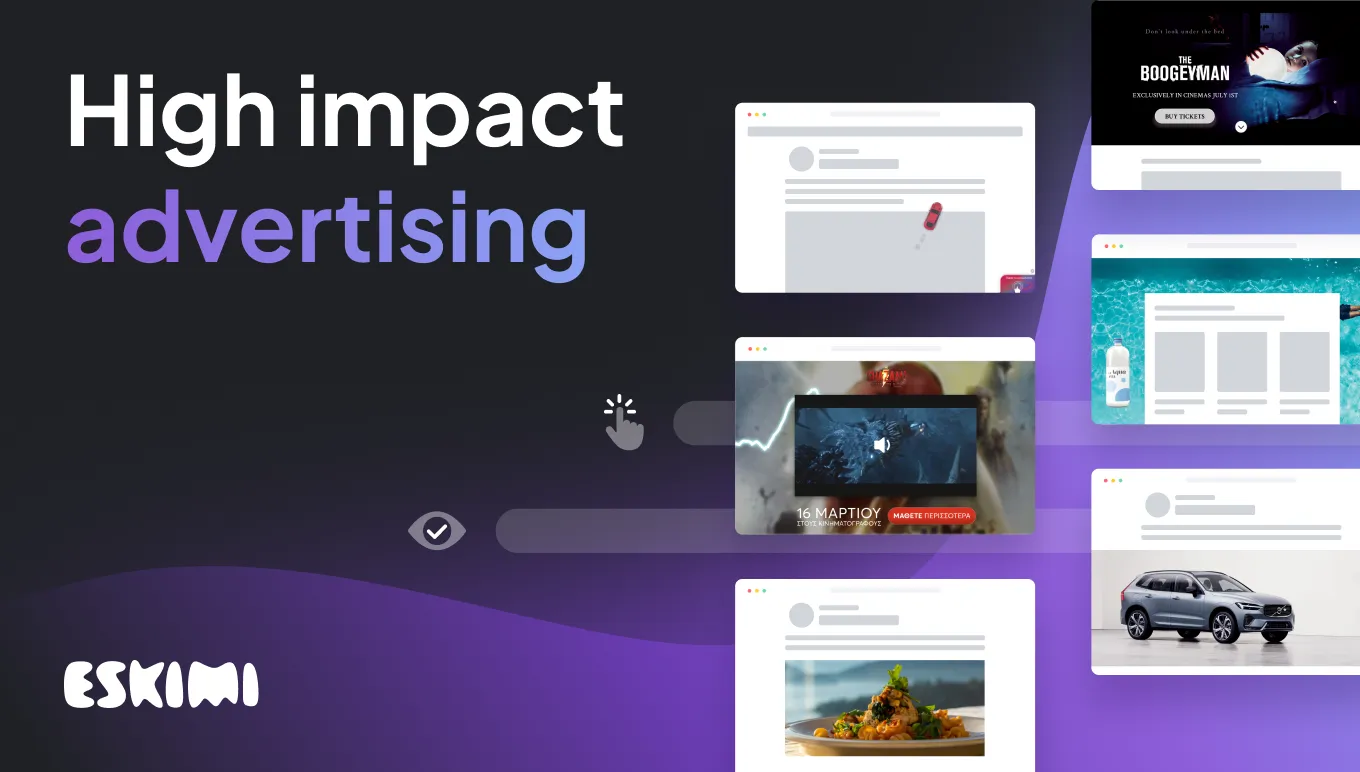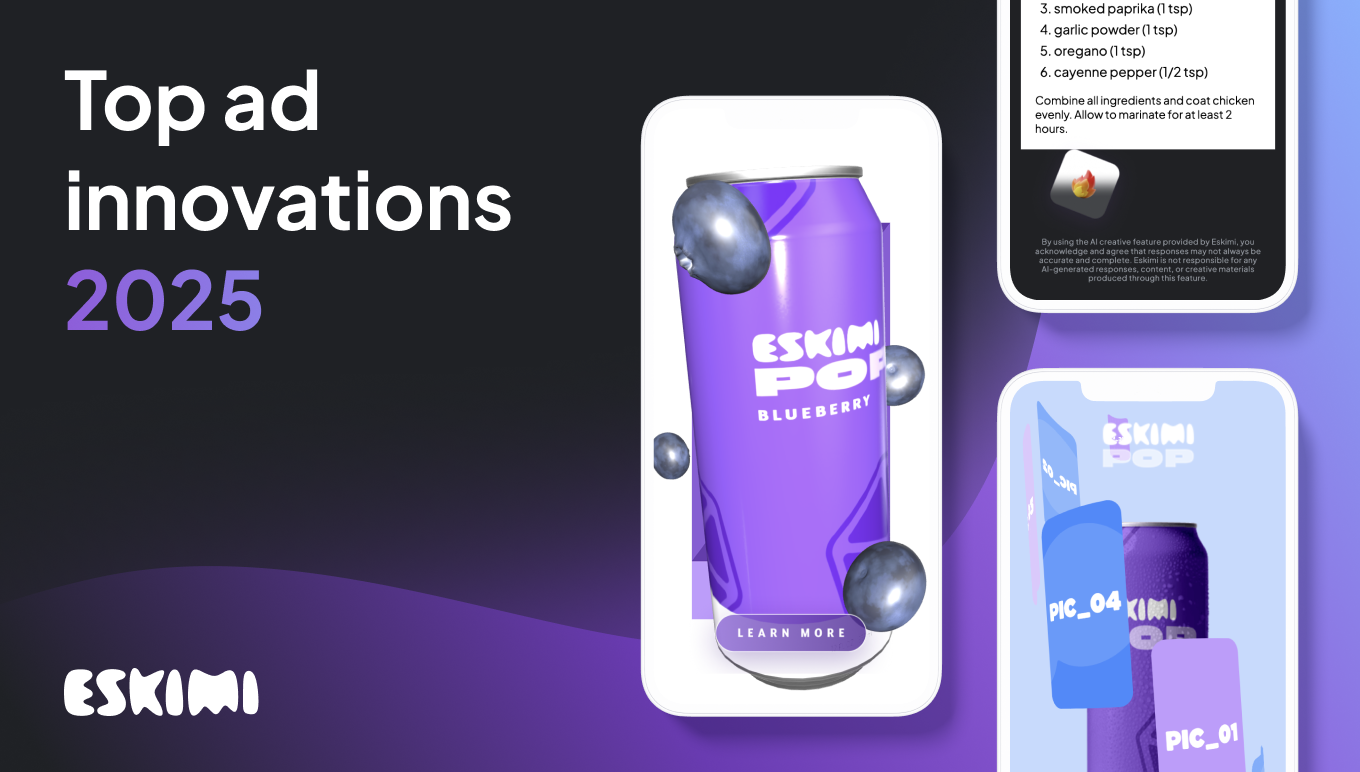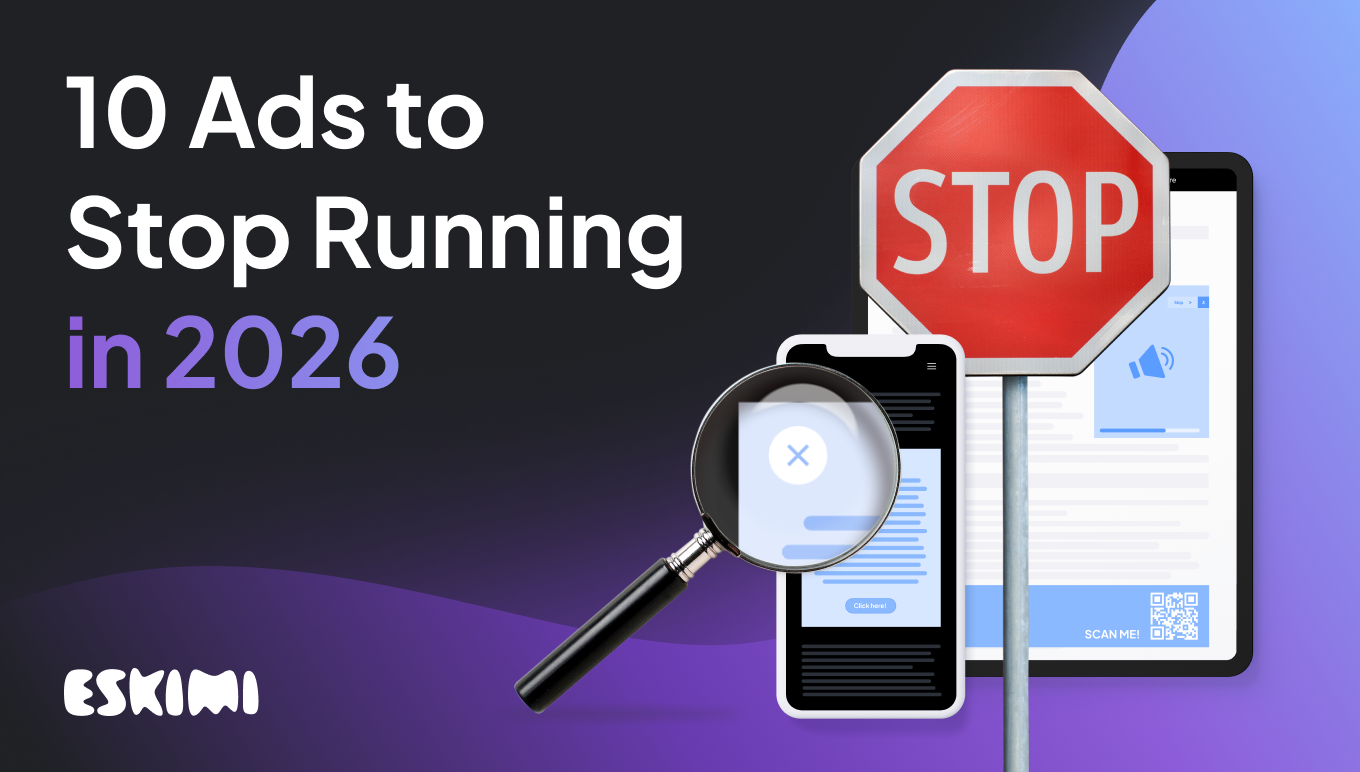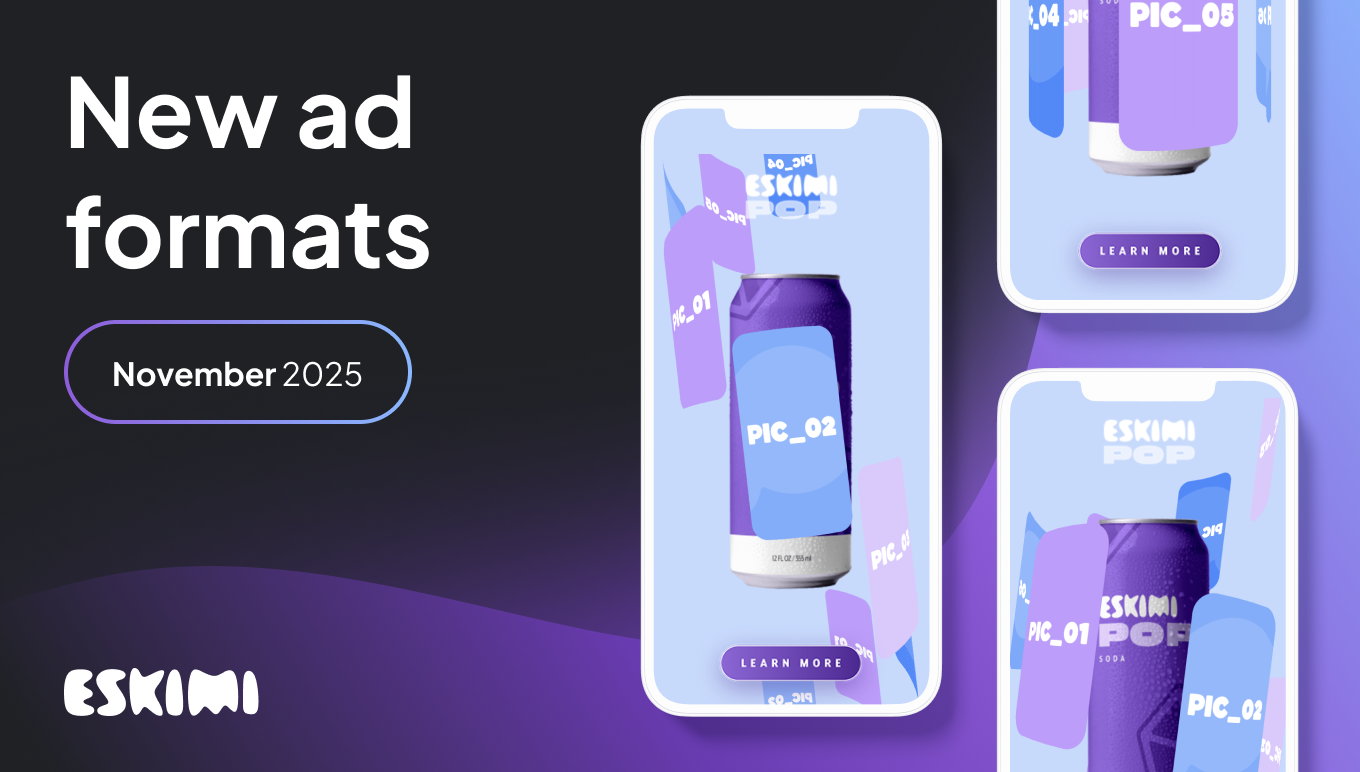The Rise of High Impact Advertising

The origins of the word "advertising" lies in the Latin language. It is derived from the Latin word "advertere" which combines the prefix "ad-" meaning "to/towards" and the verb "vertere" meaning "to turn/direct."
Literally translated, "advertere" means "to turn attention towards," which perfectly
describes the whole point of the advertising industry. In a world saturated with information, attention has become the cornerstone for successful advertising campaigns - obviously, something every advertiser seeks.
What is high impact advertising?
Enter high impact advertising—a cutting-edge approach which goes beyond traditional display ads, offering interactive and engaging visuals. High-impact ads are premium non-standard digital advertising formats that trigger attention and enable superior ad performance. Some key features include:
- Visually striking design: Rich media content that captures attention.
- Interactive elements: Uniquely engaging the user.
- Memorable experience: Leaving a lasting impression.
These elements are crafted to stand out, drive higher engagement, and deliver stronger conversion rates.
Why does high impact advertising matter?
Before diving deeper into why high impact advertising matters, let’s clarify: the concept of focus and attention has many layers; they’re not one thing. Understanding the different layers might be the key to unlocking successful ads.
The distinction between "making a conscious effort to focus" and "intentionally splitting your focus" is substantial. For instance, you’re purposely partitioning your attention if you’re listening to a podcast during your commute. In other words, you're oscillating between concentrating on the road and the podcast content, giving a moderate level of particular attention to both activities.
Similarly, when you scroll through social media on your mobile device as the television plays in the background, tuning in sporadically to catch a line or scene, you're focusing on one aspect while primarily directing your attention to something else.
Marketing professionals understand that to convey a message to you effectively, they must pull you away from what you're consciously concentrating on so that you may unknowingly turn your attention to them. This is why advertisements often have a higher volume than the programming you're viewing and why successful commercials employ elements of novelty or recognition to capture your mind's focus.
In an era flooded with online content, standing out is challenging. High impact advertising rises above the noise, connecting with audiences in a powerful way. Why does it matter?
- Increased engagement: People interact more with these ads.
- Higher conversion rates: More interactions lead to more sales.
- Brand recognition: Memorable experiences build strong brand recall.
High impact advertising isn't just a trend; it's a tool reshaping how businesses reach consumers. It's creating bold impressions in online ads, ready to lead the next advertising evolution.
What are the current trends?
In the rapidly evolving world of programmatic advertising, high impact ads stand out as a game-changer. Here's a glance at the current trends and future projections:
- Visual dominance: Bold, visually engaging content is more appealing. Interactive videos, dynamic images, and 3D graphics are capturing attention.
- Personalization: Tailoring messages to individual preferences, using generative AI tools and data-driven strategies, is building stronger connections.
- Integration with emerging technologies: Expect Virtual Reality (VR) and Augmented Reality (AR) to play a more significant role in offering immersive experiences.
Challenges in high impact advertising
While high impact advertising sounds promising, there are a lot of hurdles to overcome before you reach the “conversions Promised Land.”
Ad Fatigue and banner blindness
As the online environment grows saturated, users often become numb to ads. Ad fatigue and banner blindness are two of the most common hindrances to getting people to pay attention to your ads. Here's how to do it:
- Ad fatigue: This occurs when ads become overused, leading to disinterest.
- Solution: Rotate ad content frequently, keeping visuals and messages fresh and relevant.
- Banner blindness: Users unconsciously ignore banners, missing the content.
- Solution: Utilize compelling visuals, strategic placement, and innovative design to capture attention.
Personalization and privacy: How to strike the perfect balance
In an age where personalization enhances user experience, privacy remains a priority. Here's a breakdown of this critical balance:
- Personalization: Tailoring content can engage users but raises concerns.
- Solution: Implement personalization with transparency, letting users know why content is tailored.
- Privacy: Ensuring data security is essential.
- Solution: Adhere to legal regulations and communicate openly about privacy measures, building trust with users.
How does the intersection of programmatic and high impact advertising shape modern marketing?
Programmatic advertising and high impact advertising were once two distinct domains. Today, their intersection is revolutionizing the online advertising landscape:
- Programmatic buying: Utilizing algorithms, ads are purchased and placed efficiently.
- High impact visuals: Combining programmatic buying with high impact visuals means more personalized and engaging content.
- Optimized targeting: Reach your desired audience with more precision and effectiveness.
The blend of these elements ensures that the right message reaches the right audience at the right time, creating a more engaging and resonant user experience.
Benefits of high impact ads
The benefits of high impact ads are undeniable. This “top-of-the-food-chain” product stands out from traditional advertising by default.

Now, let’s talk some numbers.
Performance data
Metrics are the be-all, end-all of the marketing and advertising realm. To sprinkle some context over our high impact advertising use case, here are some numbers:

Examples of high impact ad types
High impact ads come in many different shapes and sizes. Their versatility is one of the main reasons why they are becoming so popular. But enough with the words, let’s go ahead and show you some examples (ok, maybe a few more words).
Topscroll
A topscroll banner is located at the top of the screen (before the page content) and is the first thing visitors see once they land on the website.
Topscroll banner instantly draws attention to the ad content, yet is not intrusive as it allows users full usability by scrolling through it and natively has a scroll indicator built in. It typically takes 80% of the available browser window height, but this number highly depends on the publisher (it can also take more/less).


Midscroll
A Midscroll banner appears somewhere on the page (taking 100% of the browser width) while the visitor scrolls down the website. The banner creates a "window effect" as the ad sitting behind the content is elegantly revealed and appears in the article. The website content is covered again as the user continues with the text.


Double Midscroll
Just like Midscroll, Double Midscroll also appears on the page at some point and nicely blends with the page content. As the visitor continues to scroll the website, the ad gets covered by the page content again.


Inline Midscroll
Inline Midscroll is a high impact ad type that, just like Midscroll and Double Midscroll, appears mid-way down a publisher page as the user scrolls past page content. Instead of taking 100% of the browser width, Inline Midscroll fits the width of the publisher content. The height of the ad can vary according to publisher preferences.


Seamless Skin
Seamless Skin enables you to "wrap" the website content in your ad. It can be created as one continuous ad or divided into three sections. When creating a Seamless Skin, it is possible to use static, animated, or interactive elements. While the top banner can be scrolled out of view, the content in the side panels remains visible throughout the time of browsing the page.


Fullpage Takeover
As the title suggests, Fullpage Takeover ads take over the publisher page and fully cover the content. For this to happen, a visitor must interact with the ad in one way or another - click on it, expand intentionally, etc.


Outstream
Outstream is a high impact video ad format that appears in line with non-video-based editorial content, e.g., articles. This type of ad organically matches the page content and looks like a natural part of .it Therefore, outstream is an effective and non-disruptive way to capture viewers' interest while drawing attention to your brand.


Floating Ad
Floating ads are ad banners covering a small portion of the website content, typically appearing in the corner of the site or at the bottom of the screen. As the user scrolls down the page, floating ads stay fixed on the content. Floating ads can appear in static, video, o or rich media formats.


Case Study: Floating ads campaign
Naivas, Kenya's largest supermarket chain, used to approach advertising the traditional way. It mainly relied on TV, radio, and print to reach consumers and bring them to one of its 84 stores nationwide.

The future of high impact advertising
What does the future hold for something that is already considered to be the future? High impact advertising might be at the beginning of its journey, but the potential is obvious. Here are some key considerations.
AR, VR, and other immersive technologies
The advent of AR, VR, and immersive technologies is a turning point for high impact advertising and here’s how they are redefining the landscape:
- Virtual exploration: Users can virtually try products, offering an unmatched, personalized experience. This has led to more informed purchases and customer satisfaction.
- Immersive storytelling: AR and VR enable brands to tell their story interactively. This storytelling capability deepens emotional connections with audiences.
- Enhanced engagement: Interactive ads foster engagement and retention, making the advertising experience more memorable—the future promises even more innovative applications of these technologies.
Predictions
Forecasting the future of high impact advertising unveils a world of opportunities and challenges. Here's what to anticipate:
- Personalized content: Targeting will become even more precise, with content tailored to individual preferences. This is already happening, but it will rise to a new level. This will drive both engagement and ROI.
- Sustainability concerns: With increased data utilization, ethical and environmental considerations will take centre stage. Responsible practices will be integral to advertising's future.
- Technological integration: Combining technologies like AI, 5G, and IoT will become commonplace. This integration will lead to more robust, cohesive advertising strategies.
The future of high impact advertising is dynamic and promising. These insights shed light on the industry’s trends, offering a glimpse into an exciting technological innovation. By embracing these advancements, you can create more engaging, effective campaigns that resonate with today's discerning audiences.
Level Up Your Advertising with Eskimi
- Reach 96% of Open Web
- 2,500+ Targeting Options
- 100% Managed or Self-Service
- In-House Creative Studio Team
- Display, Video, In-Game & CTV
- #1 Rated DSP on G2





